Angels
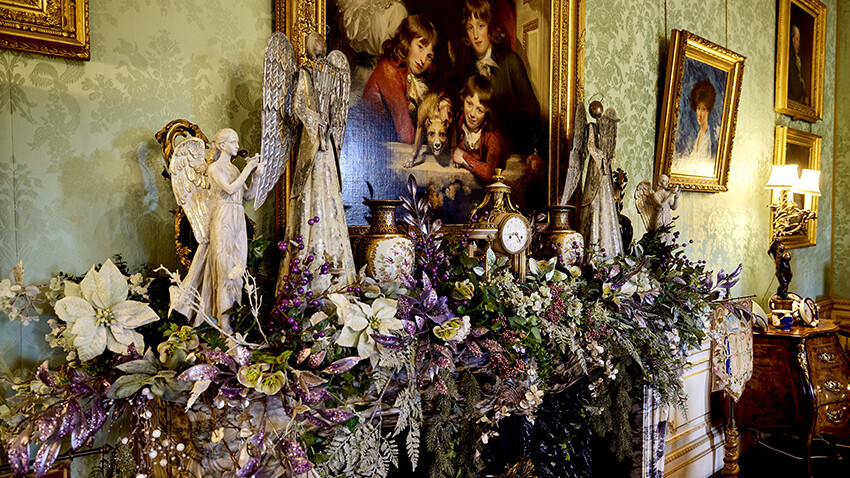
Angels
 Step inside the front door of the Castle and it is such a welcome relief to escape the endless rain and to be out of the wintery weather. There are gravel puddles, grass puddles and splodgy mud in the fields - it is all just sitting on top of the ground. There is simply no capacity left to drain away any more water.
In contrast however, the front hall looks really rather lovely this year, full of deep dark greenery, tall bay trees and, set towards the front, pale stone angels.
Step inside the front door of the Castle and it is such a welcome relief to escape the endless rain and to be out of the wintery weather. There are gravel puddles, grass puddles and splodgy mud in the fields - it is all just sitting on top of the ground. There is simply no capacity left to drain away any more water.
In contrast however, the front hall looks really rather lovely this year, full of deep dark greenery, tall bay trees and, set towards the front, pale stone angels. As visitors make their way deeper into the castle, various other angels emerge from mantelshelves and floral arrangements. Some are larger, some smaller, some detailed and some just modern outlines. There is even one in flight, blowing a trumpet.
As visitors make their way deeper into the castle, various other angels emerge from mantelshelves and floral arrangements. Some are larger, some smaller, some detailed and some just modern outlines. There is even one in flight, blowing a trumpet.
 There have probably been angels as long as there have been people – written records from the earliest Zoroastrians for example reference armies of angels whilst the concept of hosts of angels and archangels continues through the books of both the Old and New Testaments. Some of the angels have specific names such as Gabriel or Michael and the original church here at Highclere was named St Michael and all Angels.
Angels are portrayed in art as real but in literature their role shifts between the physical and the philosophical. The primary role of angels seems to be to act as a bridge over the cosmic divide that separates God and humanity – they are messengers but are only able to show God’s message rather than act as principals: they cannot give instructions.
There have probably been angels as long as there have been people – written records from the earliest Zoroastrians for example reference armies of angels whilst the concept of hosts of angels and archangels continues through the books of both the Old and New Testaments. Some of the angels have specific names such as Gabriel or Michael and the original church here at Highclere was named St Michael and all Angels.
Angels are portrayed in art as real but in literature their role shifts between the physical and the philosophical. The primary role of angels seems to be to act as a bridge over the cosmic divide that separates God and humanity – they are messengers but are only able to show God’s message rather than act as principals: they cannot give instructions. As Christmas nears, those who enjoy the carol concerts and readings hear about the angels who foretell the birth of baby Jesu. They later appear at key moments throughout his life, for example after he spent 40 days in the desert,” behold, angels came and ministered to him” and famously in Matthew 28:5 an angel speaks at the empty tomb following the resurrection of Jesus and the rolling back of the stone by angels.
Yet angels are not just part of the past. They are also part of the new landscape as demonstrated for example by the contemporary sculpture “The Angel of the North” by Anthony Gormley. Arguably it is one of the most easily recognisable modern public artworks in the UK and, at 66 ft tall with a wingspan of 177 ft, it certainly is the largest sculpture of an angel in the world. It is it is also a reminder of the industrial history of the area in which it stands, just by a disused mining quarry, yet references the future as a focus for human hopes and fears. Anthony Gormley said “People are always asking, why an angel? The only response I can give is that no-one has ever seen one and we need to keep imagining them.”
As Christmas nears, those who enjoy the carol concerts and readings hear about the angels who foretell the birth of baby Jesu. They later appear at key moments throughout his life, for example after he spent 40 days in the desert,” behold, angels came and ministered to him” and famously in Matthew 28:5 an angel speaks at the empty tomb following the resurrection of Jesus and the rolling back of the stone by angels.
Yet angels are not just part of the past. They are also part of the new landscape as demonstrated for example by the contemporary sculpture “The Angel of the North” by Anthony Gormley. Arguably it is one of the most easily recognisable modern public artworks in the UK and, at 66 ft tall with a wingspan of 177 ft, it certainly is the largest sculpture of an angel in the world. It is it is also a reminder of the industrial history of the area in which it stands, just by a disused mining quarry, yet references the future as a focus for human hopes and fears. Anthony Gormley said “People are always asking, why an angel? The only response I can give is that no-one has ever seen one and we need to keep imagining them.”
 Angels can, quite literally, be found everywhere and not just in art, literature and architecture. A chapel in Assisi, Italy, dedicated to Our Lady of the Angels, inspired the name of a new town founded in 1781 in a faraway new country called El Pueblo de Nuestra Señora la Reina de los Ángeles was later shortened simply to Los Angeles.
The idea that we each have a Guardian angel who is there to protect us is both an enduring and a positive thought. That for those of us travelling through life both metaphorically and on an actual journey, “who have to pass by an unsafe road, so an angel is assigned to each man as long as he is a wayfarer.” What more could a traveller ask for?
Angels can, quite literally, be found everywhere and not just in art, literature and architecture. A chapel in Assisi, Italy, dedicated to Our Lady of the Angels, inspired the name of a new town founded in 1781 in a faraway new country called El Pueblo de Nuestra Señora la Reina de los Ángeles was later shortened simply to Los Angeles.
The idea that we each have a Guardian angel who is there to protect us is both an enduring and a positive thought. That for those of us travelling through life both metaphorically and on an actual journey, “who have to pass by an unsafe road, so an angel is assigned to each man as long as he is a wayfarer.” What more could a traveller ask for?
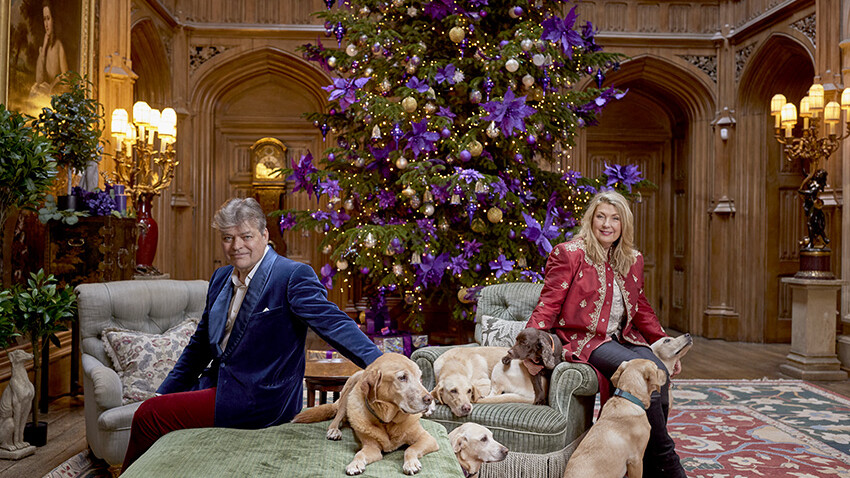
- Christmas
- Community
- Dogs & Horses
- Egypt & Tutankhamun
- Entertaining
- Farm
- Filming
- Gardens
- History & Heritage
- Daily Life
- Royalty
- Cooking
- Interiors
- Heroes
- Architecture
- Cars
- Conservation
- Downton Abbey
- Events
- Gardens & Landscape
- Highclere Castle Gin
- History
- Planes
- Restoration
- Stories & Books
- Uncategorized
- Visitors
- Wildlife
77 Comments
Zalig kerstfeest
Enjoy Xmas time.
Happy Christmas and a blessed New Year
May it be true we each have an angel looking over us. Merry Christmas Lady Carnarvon to you and your family.
How beautiful.
I thought the Angel blowing the trumpet at a quick first glance was
Sipping a Coup de Champagne!!
Have a wonderful Christmas.
Blessings to you all
Christine Tyrie
What a lovely article. God bless you and a Happy Christmas to you and yours.
Lovely sentiments as always, Lady Carnarvon. I do love your blog.
My daughter loved angels when she was small. Every time we'd go shopping near Christmas, she'd want a new tree-top angel. Fast forward to this year, and trying to decide which one of three. Maybe I'll place them all on the tree!
Dear Lady Carnarvon,
I have always believed in angels. This has so inspired me to add angels to my Christmas decor. I don’t know why I’ve never thought of it. Wishing you blessings at Christmas.
Merry Christmas
Dear Lady Carnarvon,
Merry Christmas to you and your family! I had a conversation about angels in church on Sunday, and how special it is to receive a message from God, through an angel, as this means that God is pleased with us. The comment that "all angels are blokes you know!" did not go unnoticed, however and appears to be true.
Jane Bentley
This was a beautiful way to start my day. Thank you so much. Merry Christmas!
Lovely the picture of angels did you and lord Carnarvon have a nice weekend and happy Christmas to you and lord Carnarvon and your staff l enjoyed Christmas it is my birthday Boxing Day thank you for your email
Beautifully written :).
Good balancing act!
It is such a nice thought
Every Monday I wait to read and enjoy your blog can't visit there, but I can dream through your photos Merry Christmas
Beautifully said, Lady Carnarvon. The images are reassuring and a treasured hope that we are all watched over by angels. Also, we sing of angels (heard on high) which brings additional joy to our hearts and minds.
I wish you and yours a Blessed and Happy Christmas. Good Health and Joy in the New Year! Toasting with my favorite Highclere Castle Gin!
Best regards,
Charlotte Merriam Cole
When my sisters and I were little, Mom gave us each of us an angel every Christmas. Now that she's gone, we have continued that tradition with each other and with our own children. They have in turn carried the tradition into the future with their little ones.
Today, I have amassed more than enough angels to fill my tree!
Thank you for the wonder-full photos and beautifully written words.
Merry Christmas to all!
Thank you for a wonderful visit last Tuesday. It was a joy to be able to share the peace and tranquility of your beautiful home and the angels were certainly a highlight of the wonderful festive ambiance which radiates throughout Highclere at this special time of year.
As always, spot on! A very Merry Christmas to you and yours!
Dear Lady Carnarvon,
Such lovely words today, thank you! Happy Christmas to you and Lord Carnarvon, to your family, and to all your furry friends!
Robert Fox
Chicago
Lady Carnarvon,
Thank you for these lovely pictures of angels and the hope and love they seem to represent. I’ve always thought that God speaks to us with unseen angels, guiding us.
Many kind wishes for angels to be with your family during this Holy Season.
Martha G
I hope the angels are watching over you, Lord Carnarvon and the rest of the family during this Christmas season. We can all use a little help from time to time.
Thank you for sharing the lovely display. I was watching season 6 of The Crown episode "The Ritz" last night that features Porchey- Lord Carnarvon the 7th (as fondly called by Queen Elizabeth II). It made me wonder if somewhere in Highclere records lies letters between the two of them since they knew each other since age 16. Maybe some of your blogs will reveal more of that history. I treasure your blogs and wish you a Happy Christmas.
Visiting Highclere Castle this past fall was one of the most memorable experiences for my husband and I. Thanks for carrying on your family’s tradition. Wishing you and yours a Merry Christmas and a Happy New Year. ✨
Your messages are always informative and inspiring! I am looking at my Christmas angel in a new light. You have such a knack at making your beautiful castle home both warm and inviting. Many blessings to you and your family in the new year!
Dear Lady Carnarvon,
Your home looks beautiful, always, and especially so at this time of year. I enjoy your updates.
Have you seen books by Lorna Byrne and her experiences with angels?
May you and your family have a Happy Christmas!
With kind regards,
Nancy Nash
Glorious angels.
Happy Christmas!
Another memorable read ,thank you for all the blogs they are so interesting to read wonderful to think we all have an angel looking after us ,
A very happy Christmas to you and your family ,
Happy holidays, Lady Carnarvon.
Wij wensen alle harde medewerkers van High Clere een engelachtig Kerstfeest en een gezond Nieuwjaar, hopelijk met wat beter weer dan nu!
We suppose it doesn’t need any translation!
Mayke en Henk Knabben (Netherlands)
Thank you!
What a beautiful post, Lady Carnarvon.
I don't know what I would do without my guardian angel! My tree is festooned with beautiful angels, one I purchased because she looked just like my mother. I think of her each time I look at our tree.
Wishing you and all the Highclere Castle family a wonderful Christmas and a New Year filled with joy and best wishes.
xxPatsy
Thank you for your historical comment about the founding of Los Angeles, the City of Angels.
An expat, I live here now and had no idea it was founded in 1781!
Thank you for the pictures of the wonderful arrangements.
Beautiful post.
Wishing you all those at Highclere a very merry Christmas and a joyous New Year!!!
Beautifully written. Thank you
Looks like a lovely, angelic Christmas at Highclere! Enjoy this time with your family and friends. Thank you for sharing with all of us!
I am full of odd information!
That sounds lovely
A very Happy Christmas to all at Highclere, 's included. Its definitely a team effort in making it look so stunning. Thank you Lady Carnarvon for sharing your wonderful home and your insight into so many interesting subjects. Roll on 2024 and many more blogs to come.
Best wishes.
Just beautiful❣️Thank you and wishes for a wonderful holiday.
Such a moving and touching blog and beautiful pictures of the angles Lady Carnarvon.
Merry Christmas to you and your family and all those who work at Highclere.
I will be using again this Christmas the wonderful recipes of Christmas of Highclere that we received last Christmas when we where there and the beautiful choir of the singers of Ukraine, they sang so lovely.
I always learn something from your blog posts.
Your Angels are absolutely beautiful. The Christmas decorations and your stunning tree made me feel so happy and blessed to be in your beautiful castle . I simply love your home . Also not forgetting the amazing tree outside I always hug .I have a photo of which I will always treasure just hugging the wonderful tree .
Merry Christmas❣️ Loved the article today‼️
Happy Christmas dear Lady Carnarvon & everyone at your beautiful Highclere, much love always,
Caroline xxx
ANGELS ARE ALL AROUND US .
What beautiful observations.
Angels have a special role for those who need them.
Happy Christmas
A beautiful post about angels Lady Carnarvon, we certainly believe Angels are watching over us. 13 years ago while hosting our annual family Christmas Eve party we received the news that our daughter had gone into labour. Around 10pm we left everyone partying to go to the hospital. Our first grandchild, a very healthy boy was born Christmas morning….the best Christmas present ever, a little angel. To keep the family grounded his sister was born 3 years later on April 01 an April fools baby and also a little angel.
I look forward to your Monday morning blog being in my inbox when I wake up, in fact if I’m honest I don’t get out of bed until after I’ve read it with my first cup of tea of the day.
I wish you, all your family, and the Highclere staff a very Merry Christmas and a wonderful 2024.
A VERY MERRY CHRISTMAS TO ALL AT HIGHCLERE CASTLE .
Hark The Herald Angles Sing, Glory To The New Born King.
Whatever your path, may you walk it in peace. X
I enjoy all the effort you put into your blog. Everything is so beautifully written; and of course the Angels and flowers are wonderful. I live in California - but once visited England decades ago. Had I known about Highclere, and had it been possible to visit at that time, I know I would have loved every inch of it.
I send you and Lord Carnarvon many blessings for Christmas, the New Year, and the coming decades.
Dear Lady Carnarvon,
Even soaking wet, you continue to inspire and bless us with the beauty of your home and country.
I love angels, I cannot tell you how many times I have called on God to send his army of angels for protection to all in need, including me or my family in many cases. Thank you so much for sharing that lovely message.
Merry Christmas and Happy and Blessed New Year 2024. May you and your family be blessed beyond measure in this new year full of expectations and possibilities.
Kindest regards, from Texas.
Thank you for your beautiful words as always. Here in Australia we have just watched a TV series about Highclere Castle. It was wonderful to "meet" you, your family and all your anazing helpers. Thoroughly enjoyed it.
Happy Christmas to you and all your family and staff.
A lovely, well-researched and well-written article. It was also inspiring! Thank you, and may God continue to bless you and your family during this Holy Season where we remember the Birth of our Saviour, Jesus Christ.
Thank you!
It is a fun book and a useful book I hope!
Another lovely piece - I love the idea that we each have an angel to guard us throughout our lives. Most comforting.
Christmas Blessings to all at Highclere.
Karin
Tsawwassen BC
I hope your guardian angel watches over you and your loved one this Christmas season and always. May it be filled with happiness and love.
Be not forgetful to entertain strangers: for thereby some have entertained angels unawares.
Hebrews 13:2 Merry Christmas.
In a castle, high above ;
where moon beams dance...
angels reside in a celestial trance.
Their wings are aglow with a silvery light;
They are our guardians unseen,
through day and through night.
Pamela G.
Dear Lady Carnarvon,
Lovely post as always, in great style and quite educational.
As I am a resident of Los Angeles area and a recent visitor to Saint Francis complex in Assisi, this story resonated with me especially.
The name of the chapel you mentioned (and I prayed in) is Porciúncula (in Spanish), and our great city was named sometimes around the teime of founding as El Pueblo de Nuestra Señora la Reina de los Ángeles sobre el Río Porciúncula (the town of Our Lady Queen of Angels on the river Porciúncula.
Then someone ran out of ink writing it and cut the name to L.A. Pity...
With best Christmas wishes,
Alex Sakowski
Irvine, CA
Dear Lady Carnarvon, I certainly have seen angels. One time in 1988, I was flying from London to Melbourne and I knew people were praying for me because I didn’t want to leave England but I had beautiful family to return to in Melbourne and I looked out of the window somewhere over the Middle East, and there were three angels supporting the wing of the plane, and marching, they were dressed like Roman legionnaires. I did Latin at school that’s why I recognised the way they were dressed, and they were about 12 feet tall and massively strong I shall never forget them!
Dear Lady Carnarvon
I would like to thank you from the bottom of my heart for your wonderful, inspiring and also comforting blog posts, which accompany us so beautifully throughout the year and make every Monday a special day.
I wish you, your family and all the helping hands at Highclere a happy, peaceful, grateful and fulfilling festive season and all the very best for the New Year.
I hope to be able to visit Highclere in person one day and send you my warmest regards from Switzerland until then
Karin Huck
You have me humming Cristy Lane's song:
"I believe in angels,
Something good in everything I see,
I believe in angels..."
Thank you for this lovely "angelic" blog, so uplifting for the holiday season.
A most Happy Christmas to you, your family, and all the staff at Highclere!
"Kales Yiortes"!
The castle is just beautiful. I love angels.
My Mom would buy me an angel ornament every Christmas to put on the tree. She is gone now, and I miss her so much, but I continue to buy angels every Christmas.
I wish you and your family A Very Merry Christmas, and a Very Happy New Year, with much love, happiness, and good health.
I hope this world finds peace too.
I had forgotten that song - thank you!
I hope so too ..
Such lovely displays at the Castle. Thank you for sharing them.
My dearest Lady Fiona your family and staff,
Feliz Natal de Jesus, e um próspero ano novo de 2024.
São os meus mais sinceros desejos a todos do castelo de Highclere.
Vila Alemã
Rio Claro-Sp
Brasil
Lovely thoughts of Angels for Christmas! Thank you and Merry Christmas to you and your family.
Merry Christmas and God bless you, your family, and your staff❣️ May angels always guard your steps and home.
Lady Carnarvon,
Have a Merry Christmas, and a very Joyous and Blessed New Year.
Thank you for the angel tour of Highclere Castle. Your decorations
are stunning.
From Texas
With best regards,
Dorothy Sipes
Lady Carnarvon,
What a beautiful topic, the theme of angels. I love the color purple in the images.
I put all my faith in angels. Archangel Raphael has answered Many of my questions. So I have deep faith in him.
Absolutely beautiful! And feeling very lucky and blessed to have finally been able to visit Highclere Castle this year on 6 December. The castle looked beautiful and festive, filled with angels and purple accents. Now we can't wait to come back. Happy Christmas!
Thank you
Dear Lady Carnarvon:
Thank you for this Monday's blog, and for sharing such a gentle story.
Best wishes to you, Lord Carnarvon, and everyone at Highclere Castle for the upcoming holiday season.
Until next time, may the angels continue to watch over you and everyone at the Castle.
Perpetua Crawford

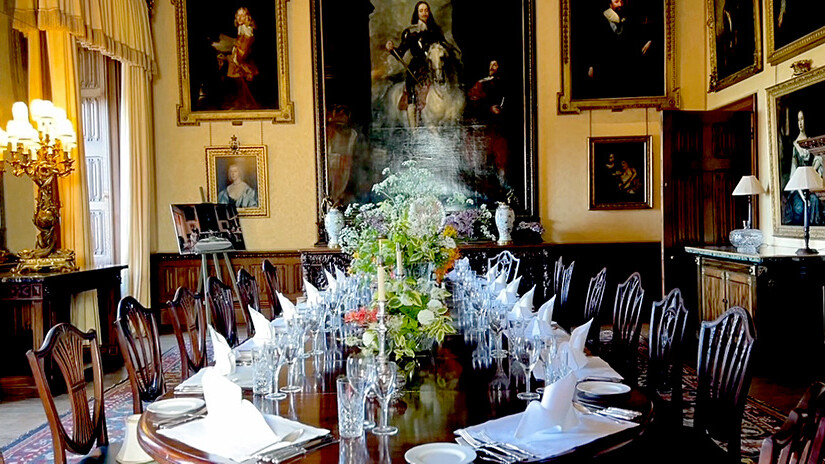
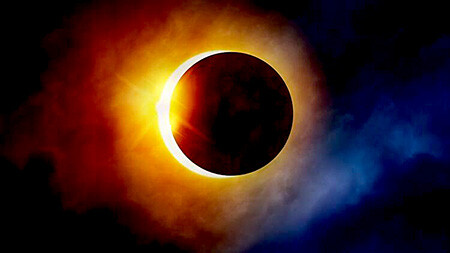
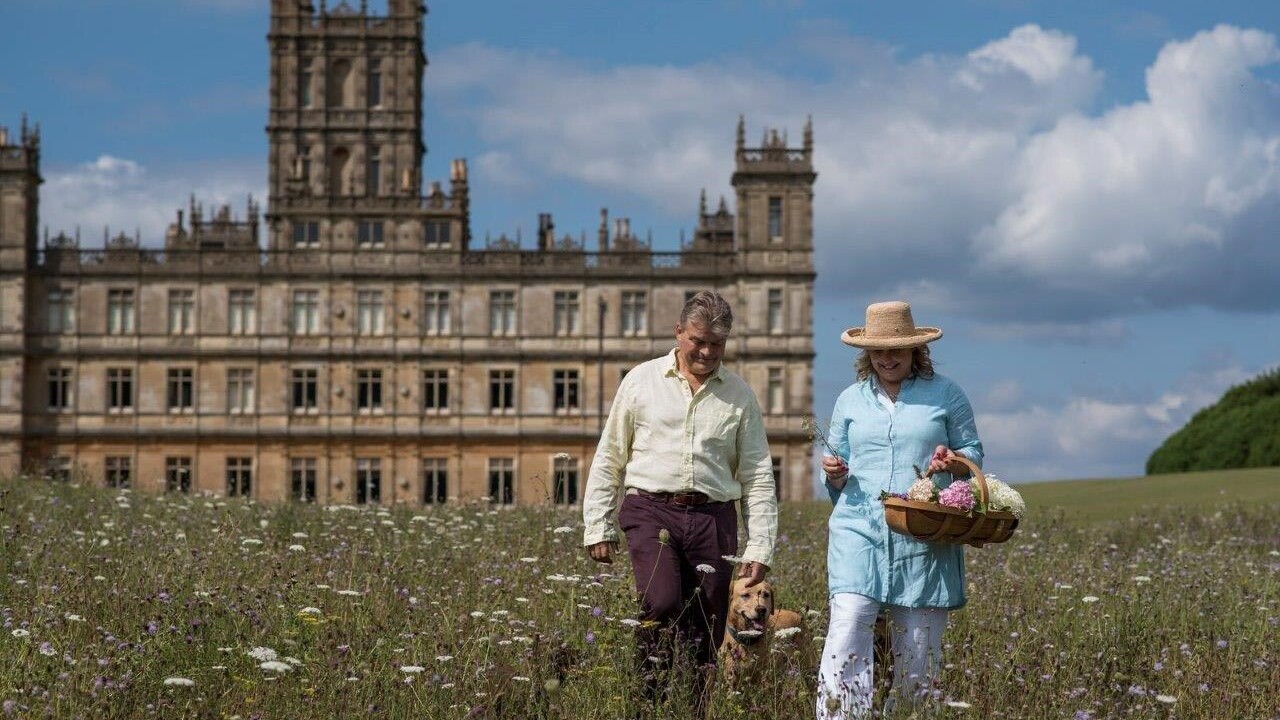
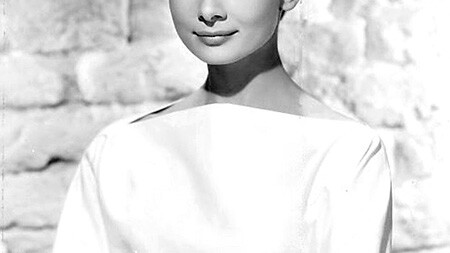
❤️